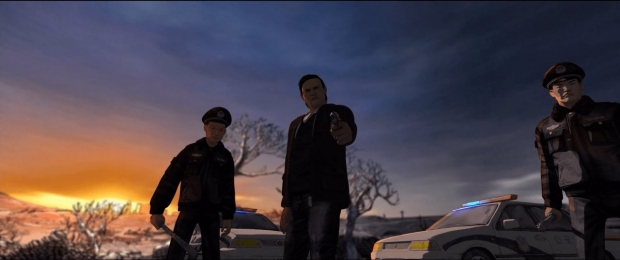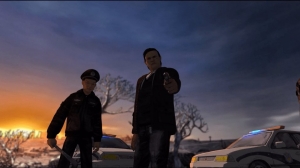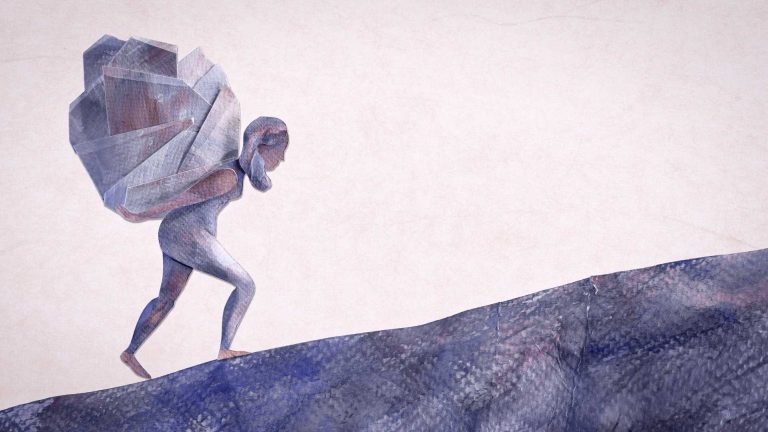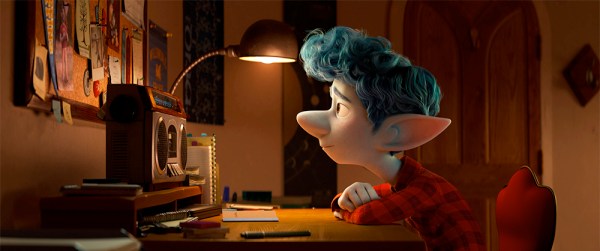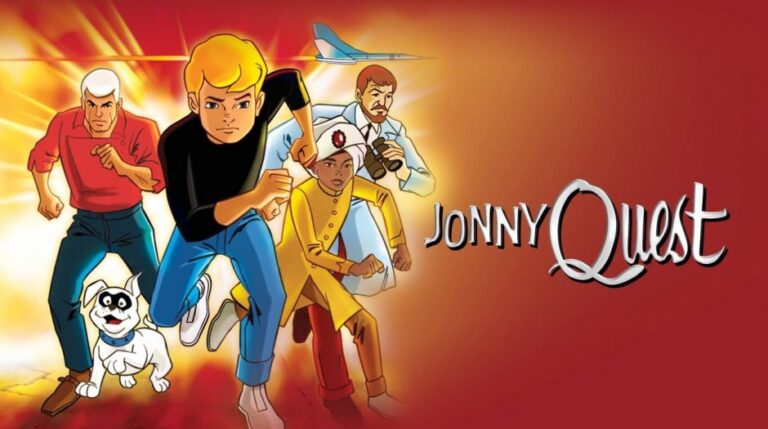What Loftus was most intentional about spotlighting wasn’t all the story’s gory details, but rather the healing process Daxiong and the other detainees he spoke with were going through during production.
But for all the detail and immersive goals of Daxiong’s drawings and the team’s animation, Loftus also wanted to be careful not to traumatize the audience as Daxiong worked through his own trauma.
He continues, “Daxiong’s drawings are so evocative and very detailed. Our role was working with him to make his art come to life on screen, to the point where you’re fully immersed in Daxiong’s thoughts and in his world.”
He continues, “But Masha looks at this and she’s just like, ‘This story needs to be told. Because this is not just an issue for Falun Gong, this is an issue for all Chinese people, and we need to know what’s happening in our country. We need transparency. We need to be able to speak up about human rights abuses.’”
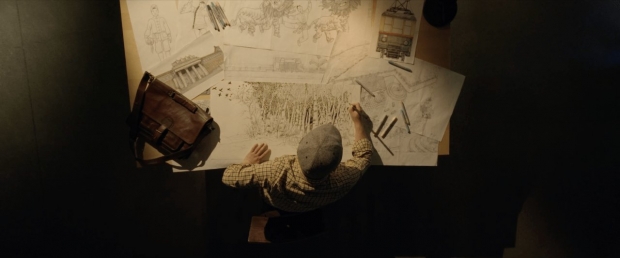
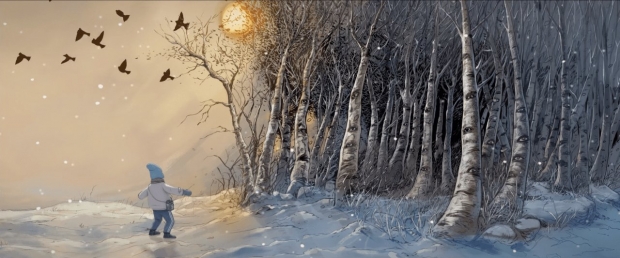
On the surface, after months of planning and risking their lives every day to get their message out to the public about how the government had painted such an inaccurate picture of Falun Gong and its participants, some would see a possible 2,000 detainees, mass fear of torture, those imprisoned being forced to renounce their faith and so many ruthlessly killed as a reason to feel, at the very least, hopeless.
And for Loftus, a filmmaker and someone who’s had a long-time passion for China’s human right issues, Eternal Spring provided his own chance to process concepts he had a hard time reconciling in the beginning of making the film.
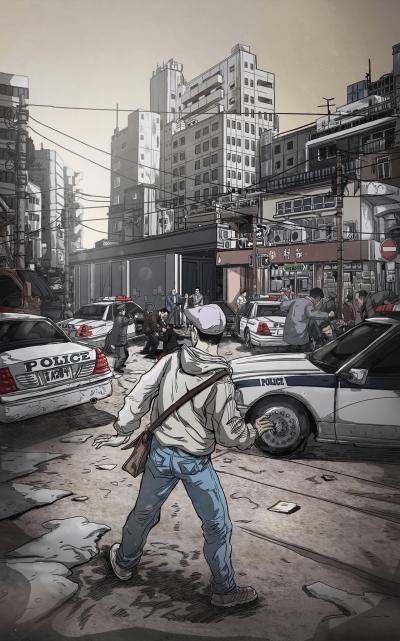
“Flash forward and Daxiong is there and he’s got this remarkable story tied to this TV heist, this dramatic, underdog rebellion effort to counter the state narrative, and all the human costs of it, and him having been detained and tortured… it was a remarkable story,” says Loftus. “I think hearing what they had suffered under her nose hit home for Masha. And it made her really interested in this story.”
“You would think these people, after having experienced all of the fallout that they did in the aftermath of this event, might have felt that their efforts failed,” says Loftus. “But one of the things that really struck me speaking with these survivors is that they didn’t feel that way. They universally felt that this was worthwhile, and were pleased that they were able to do this. It took me some time to understand that.”
Changchun itself offers a hidden message of hope in its very name, with its two Chinese symbols, 长春, inspiring the very name of Loftus’s documentary: “Eternal” (长) “Spring” (春).
Eternal Spring, an animated and live-action hybrid documentary film from Lofty Sky Pictures, came about because of a few twists and turns of fate. Before meeting Daxiong, Loftus’ own career path in filmmaking was guided by the persecution of Falun Gong.
“The TV hijacking… I’m conflicted about it,” says Daxiong in the beginning of the documentary. “The cost was high. People died. Some were imprisoned. Lives and fates were changed. Including mine.”
“He wanted to explore it,” says Loftus. “He was looking for some kind of resolution and personal understanding and answers. And the way that he communicates best is through his artwork.”
Loftus adds, “We were just letting Daxiong communicate his thoughts and his feelings. We weren’t thinking too much about how the whole story was structured together or where certain images would fit in. We just wanted Daxiong to be able to start opening up, and I think that helped.”
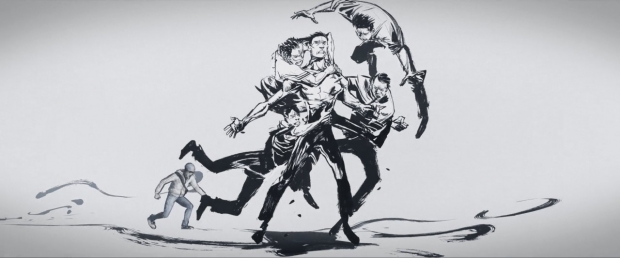
“There are these moments where she sees Daxiong’s interpretations of the hometown and there are landmarks that she remembers, and then there’s just this feeling of the city and that all really resonates with her, and it feels very familiar, says Loftus. “But then there are the stories that fly under the radar, and you don’t hear about them. And that was really difficult for her.”
“One of the decisions we made was to avoid trying to be too graphic,” says Loftus. “The story is already heavy. And with the animation, with things like the electric shocks, we limit it to a very small amount. With the actual violence depicted on screen, we tried to use silhouettes in some cases. It’s heavy enough. People can imagine. They can understand what’s going on. And the goal isn’t to shock people into some kind of sympathy. It’s to have people be able to understand what these people went through. And, with art, you can create a bit of that distance stylistically, that makes it easier to process.”
“We were shooting this live-action documentary component while we were animating scenes, and we weren’t sure where these scenes exactly would end up in the film or if we were going to change anything,” says Loftus. “All this from the perspective of a small independent studio is a pretty big leap of faith that somehow this is all going to work. In the end, I feel like it added such a new dimension where we could pull the curtain back and see the artist processing something very personal and translating it through his pen.”
Daxiong, whose real name is Guo Jingxiong, is not only the lead concept, storyboarding and 2D artist for Loftus’ documentary, but he was caught up in the aftermath of the hijacking, which took place on March 5, 2002. Daxiong, a Falun Gong practitioner then and now, was only 27 at the time.
Victoria Davis is a full-time, freelance journalist and part-time Otaku with an affinity for all things anime. She’s reported on numerous stories from activist news to entertainment. Find more about her work at victoriadavisdepiction.com.

Six months after the hijacking, 15 of the participants were sentenced to prison for up to 20 years. Some were released two years into their sentence, but by then had difficulty walking and weighed half as much as they did when they were sentenced. Some died of their injuries, many died in prison, and others are being released this year. Meanwhile, authorities in China continue to severely restrict religious freedom, persecuting Uyghur Muslins, Tibetan Buddhists, Christians, and, of course, Falun Gong practitioners.
“When we see people, despite all the risk and everything they’ve suffered, willing spread a different narrative of understanding or love or something along those lines, it has a powerful effect. And that’s why I felt like the name of the film was so apt. Because there’s always some kind of growth.”
Luckily, Daxiong was at a place in life where he was ready to face his past.
“When I was in high school, I had an interest in eastern philosophy and meditation, and I had encountered Falun Gong before there was a crackdown in China,” explains Loftus. “A year later, after I first came across Falun Gong, there was this persecution going on in China and the state media was saying that these people were evil and dangerous.”
Eternal Spring provides a window into the mind of Daxiong, which features the artist’s illustrations of not only his memories of discovering Falun Gong, the heist, being detained, tortured and fleeing his home, but also abstract childhood memories of historical heroes he looked up to, taking photos around his city and the birch forests near his home. Some of Daxiong’s illustrations also detail the memories – both fond and fearsome – of other Falun Gong practitioners he spoke with during production who too were captured by police and tortured for their faith.
It took Loftus and his small team six years, working with live-action footage and an animation production pipeline, to pull together this massive story.
Seeing the illustrations brought back a strange sense of nostalgia for Loftus’ wife, who remembers so many of these places in very different ways Daxiong and the others.
Masha, who is Loftus’ producing partner on Eternal Spring, grew up in Changchun as the daughter of a mid-level government official with no connections to the Falun Gong community and no knowledge of what any persecuted groups or dissident groups had been enduring in her own city.
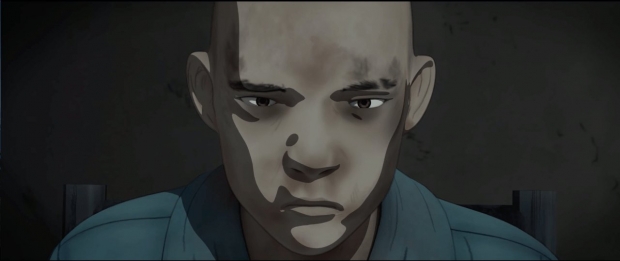
“But there was this sense of hope and I’m like, ‘Why? Why do you guys have hope?’” shares Loftus. “But their ability to speak the truth, even if it requires a lot of courage, and the odds were really stacked against them, and the consequences were severe, was worth it because they now know that hundreds of thousands of people, maybe more, witnessed this broadcast, and those people can never just look at the Chinese state propaganda in the same way again. That may not stand up to the Chinese government themselves. But they might be less willing to turn in a neighbor who they see practicing Falun Gong. That has long-term impact.
The visuals, while beautifully animated, are gut-wrenching. People are beaten, drowned, and dragged through their own blood as Chinese police ransack their homes. Some make a break for it out of windows, down drainpipes and through speeding traffic to get away. And though the opening of the film is mere minutes, the horrors seem unending.
In a five-minute long, continuous shot, 3D animated, without any cuts, the opening of Jason Loftus’ Eternal Spring weaves viewers in and out of buildings and through the chaotic city streets of Changchun, China after members of an outlawed spiritual group called Falun Gong hijacked the state TV station in an effort to change the narrative backbone of their persecution.
“In a documentary, when you see animation, it’s so often this decision by the invisible hand of the director,” says Loftus. “You just see the animation, you see the art, but you don’t know exactly what decisions have gone into it. You don’t know who’s creating it. You don’t know the interpretations and all that process. This was an opportunity because we have an artist whose life is intertwined with these events and who was impacted deeply and he’s exploring this event and himself, coming to understand it and the motivations of the people who did this, through his artwork.”
In the documentary, after the hijacking has taken place and those who were involved run for their lives, the story pauses for a moment as the camera moved from focusing on a dark alleyway to a magenta pink flower blooming on a nearby tree.
“We heard about this artist who was originally from China, and he was living in New York at the time, and he had also worked with Louis Cha, who’s the preeminent kung fu novelist in China, so we thought he’d be perfect,” says Loftus. “We invited him up and we were working at our studio in Toronto, and I learned that Daxiong came from the same hometown as my wife, Masha.”
“There’s a flower that’s used in Chinese poetry that really resonates with me called the ‘plum blossom,’ which is the national flower of the Republic of China” says Loftus. “In Chinese, it’s called ‘meihua’ and the flower actually blooms when it’s still winter and the symbology behind it is that, even in the midst of suffering or difficulty, there’s still some kind of hope of something better ahead. In the early days in the documentary, when we see them practicing their exercises in the springtime, we see the trees in full bloom with these flowers. And when they finish the TV hijacking, I wanted that one moment of a single flower blooming because, despite it all, they still feel like there are brighter days ahead.”
“So, when the camera’s moving through the 3D space, everywhere you look, you have the hyper detail of his illustrations, but you get the benefit of the 3D perspective,” explains Loftus. “And they really conjure the feel of his hometown and all of his memories.”
“I couldn’t reconcile what I was hearing with my own experiences and encounters with the group and the practice,” Loftus says. “For me, that planted this seed of concern for the human rights situation.”
After producing documentaries like Human Harvest, Avenues of Escape, and In the Name of Confucius – all focused on human rights issues in China – Loftus began work on a kung fu video game called Shuyan Saga. The game’s concept included a large amount of hand-drawn comic art for a visual novel component and Loftus reached out to Star Wars and Justice League comic artist Daxiong.
Falun Gong is a spiritual practice that promotes meditation exercises in an effort to achieve spiritual enlightenment, cultivate one’s heart and improve character as well as mental health. The religion, which was first introduced in Changchun, has three tenants: truthfulness, compassion, and forbearance. Falun Gong is practiced in over 100 countries. Only in China, where it originated, are adherents persecuted.
To bring Daxiong’s 2D illustrations to life in a 3D-animated documentary, Loftus’ team of only four animators developed a process where Daxiong would storyboard a scene, and then the team would build it in Maya, but only using gray, box shapes, with a building here, a street corner there, and take images with cameras in the software from different angles. They would then print those images out on blank sheets and have Daxiong draw in all the details in his own style. The drawings would then be scanned and draped onto the surfaces the team made in Maya.

